10 Best Visual Note-Taking Apps in 2025
Best Visual Note Taking Apps
21st Jan, 2025
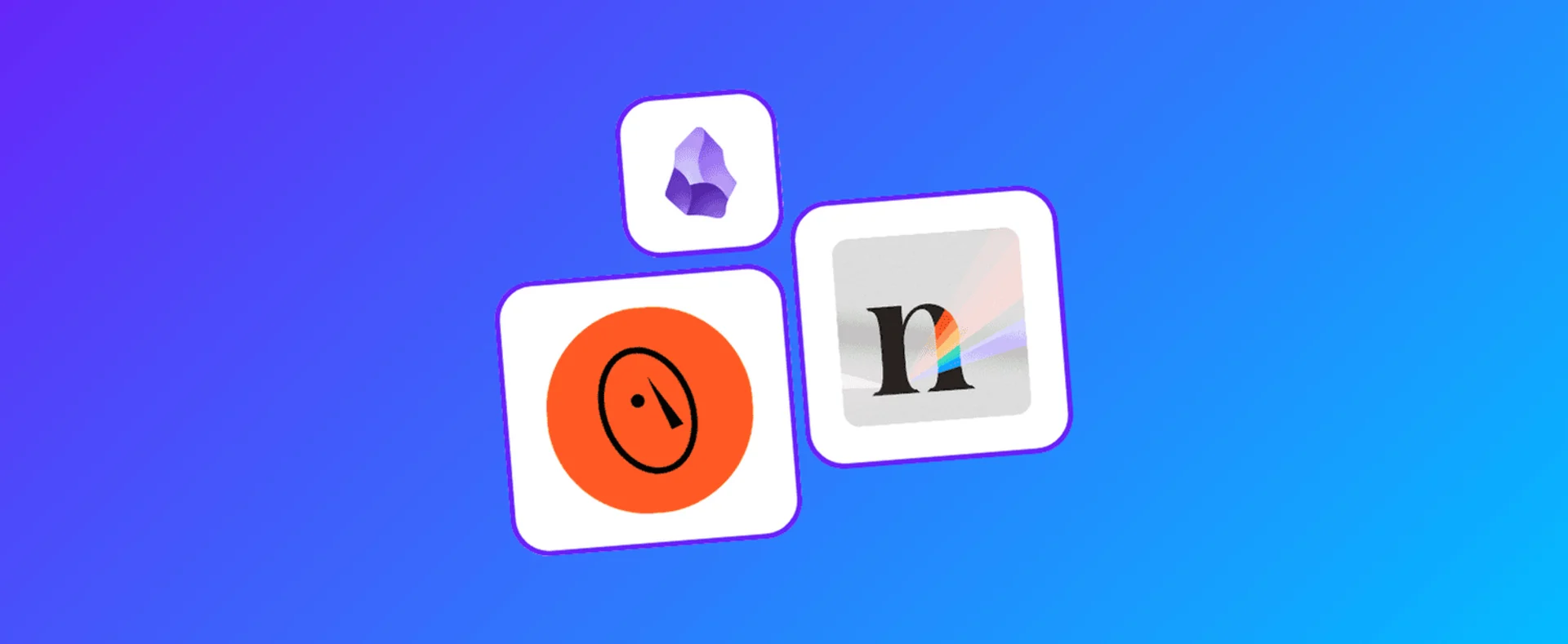
For visual thinkers, the mission is to keep things creative and free-flowing. There's a handful of note-taking apps that can help you do this.
Visual note-taking applications haven't been around that long.
But they've begun to dominate the market to care for those who love seeing their ideas, notes, and visuals expressed in front of them.
Amazingly, we found a massive influx of new visual note-taking applications that have become a joint replacement for more common, traditional note-taking apps, and they are a hit amongst visual thinkers.
Visual thinkers love these types of note-taking applications because they are easy to use, provide relationship connections between notes, and, most importantly, allow them to see what notes, ideas, and thoughts they've had in front of them against a stream or list of notes that have to be opened up to provide context.
What Are Visual Note-Taking Apps?
Note-taking apps that are designed for visual learners and thinkers.
Visual note-taking apps help visual thinkers create notes, visualize ideas, express thoughts, and project all of these into a whiteboard or canvas-like notes layout.
1. Obsidian
Best for PKM
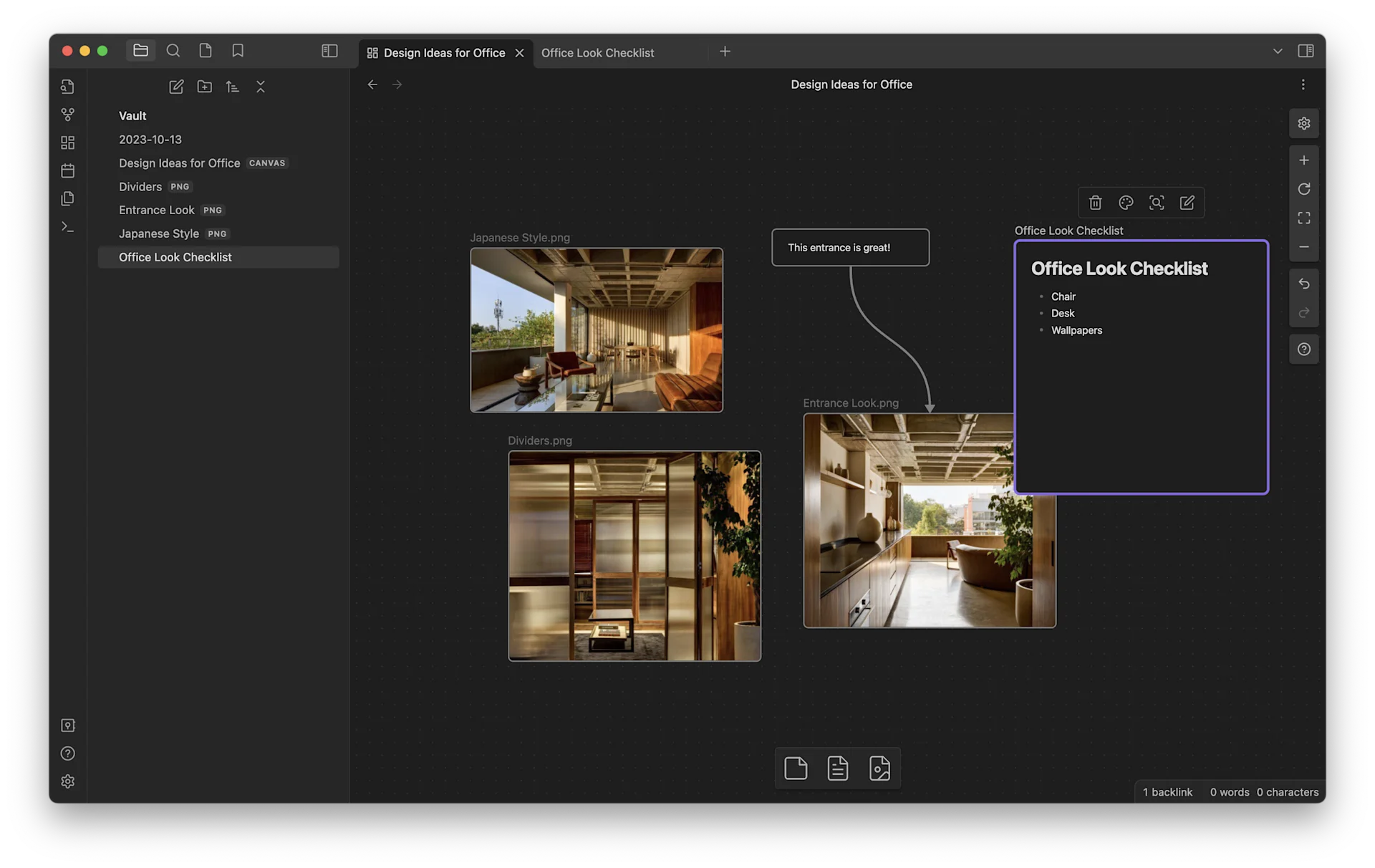
What makes Obsidian a great visual notes app?
Obsidian has a whiteboard-like feature for notes and visuals called Canvas.
Obsidian Canvas, a visual whiteboard-like feature that allows you to add notes, bring them together, and connect them in one place, has transformed what we think Obsidian is capable of. Canvas by Obsidian helps you get images, links, files, and notes from your ever-growing Obsidian library into a place to connect and visualize them.
Strangely enough, with Obsidian being free, it has become one of the best visual note apps. With local and offline support and a mindful approach to note security, many people have bought into Obsidian. Obsidian Canvas has been an experience that has upgraded its more traditional note-taking system to a visual playground.
The benefit of choosing Obsidian is that you can jump back into a solid networked thought tool without fully committing to a visual thinking tool.
Heptabase
Best for Researchers
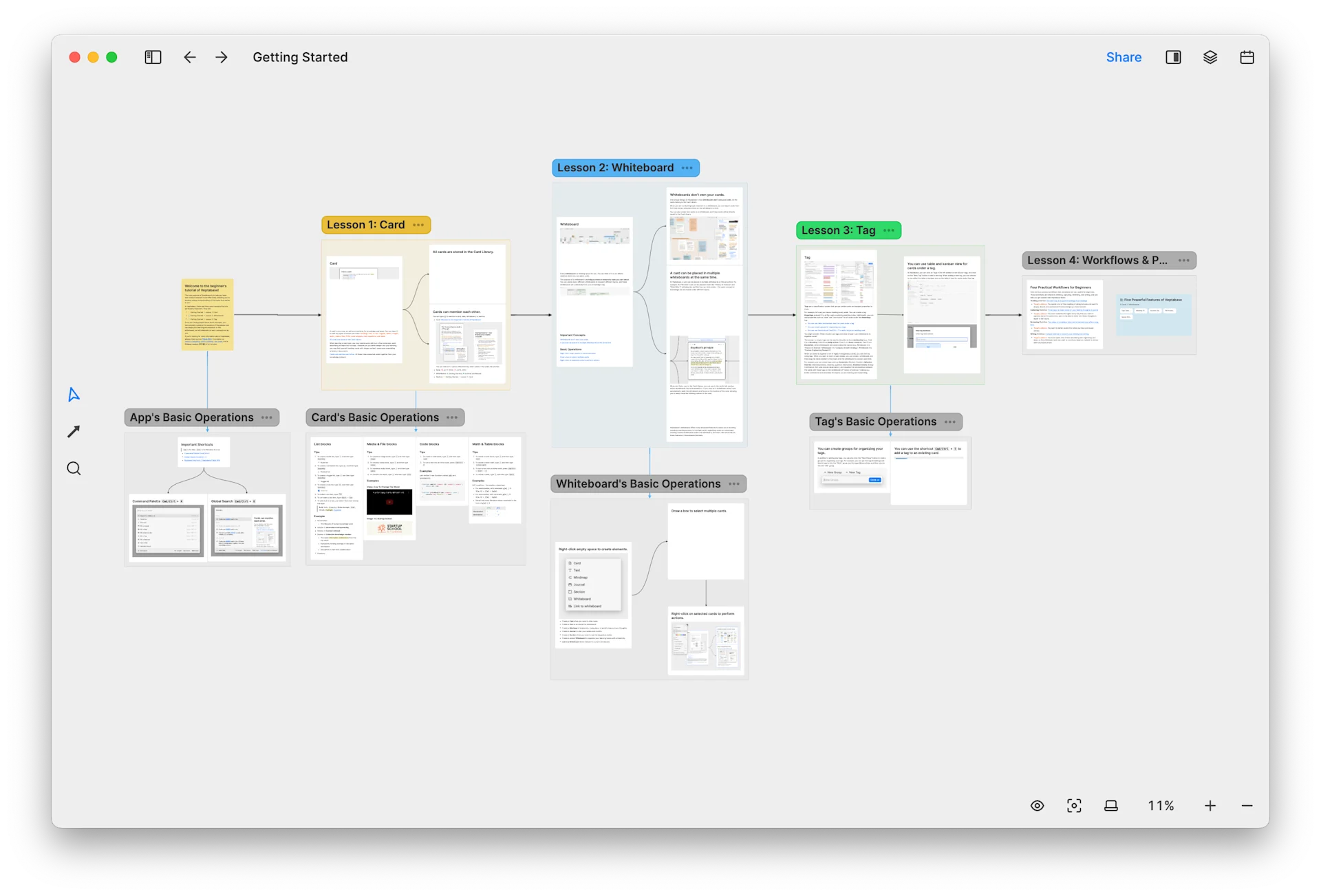
What makes Heptabase a great visual notes app?
Heptabase allows you to connect notes and whiteboard management of all your ideas.
Maybe the movie The Arrival constantly makes us think about a giant squid when we look at this visual notes app, but Heptabase is new to the scene as a place to bring your notes and ideas into one location. Heptabase has been gaining lots of attention from those who want to research notes and connect them with many users from apps like Milanote, who wish to connect notes, organize topics in boards (folders), and collate them visually.
So, many learning and research users, as well as project planning types, are coming to use Heptabase, as it does have a way to express notes in a Kanban-like view with boards.
Napkin
Best for Ideas
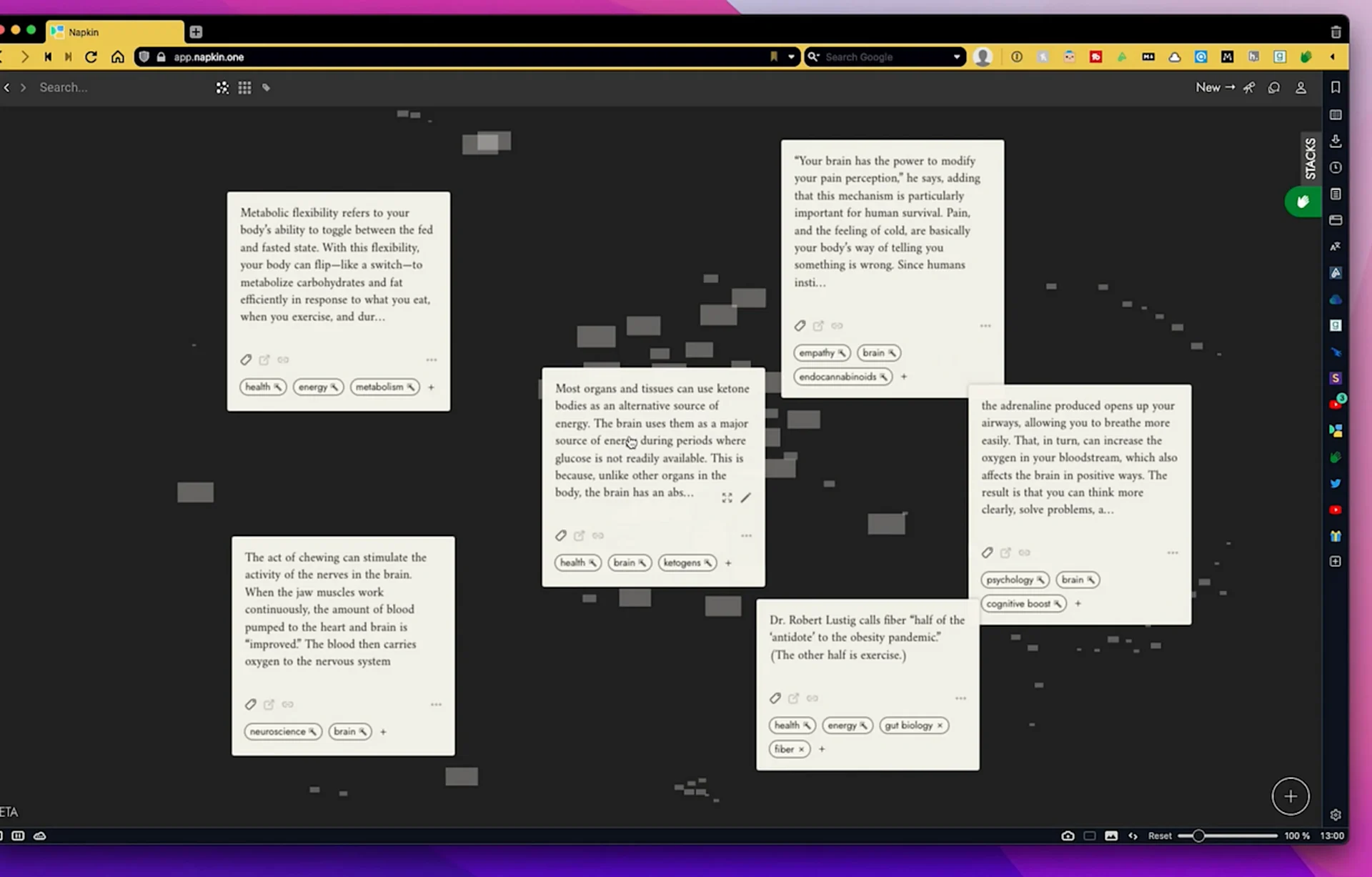
What makes Napkin a great visual notes app?
Napkin wants to capture ideas, bring them back to life & connect with others.
An exciting concept is that Napkin wants you to bring your ideas, connect them, and clip good ideas from Chrome or iOS. Then, Napkin will curate a list of ideas for you. Many people enjoy this new process and system because it allows you to bring perspective to older ideas or even ideas at the forefront of your mind.
Napkin is probably the most systems-led tool on this list. Its growing community of people who want to distill ideas, expand them, and continue to capture them is something we haven't seen in the visual notes app market yet.
Logseq
Best for Whiteboards
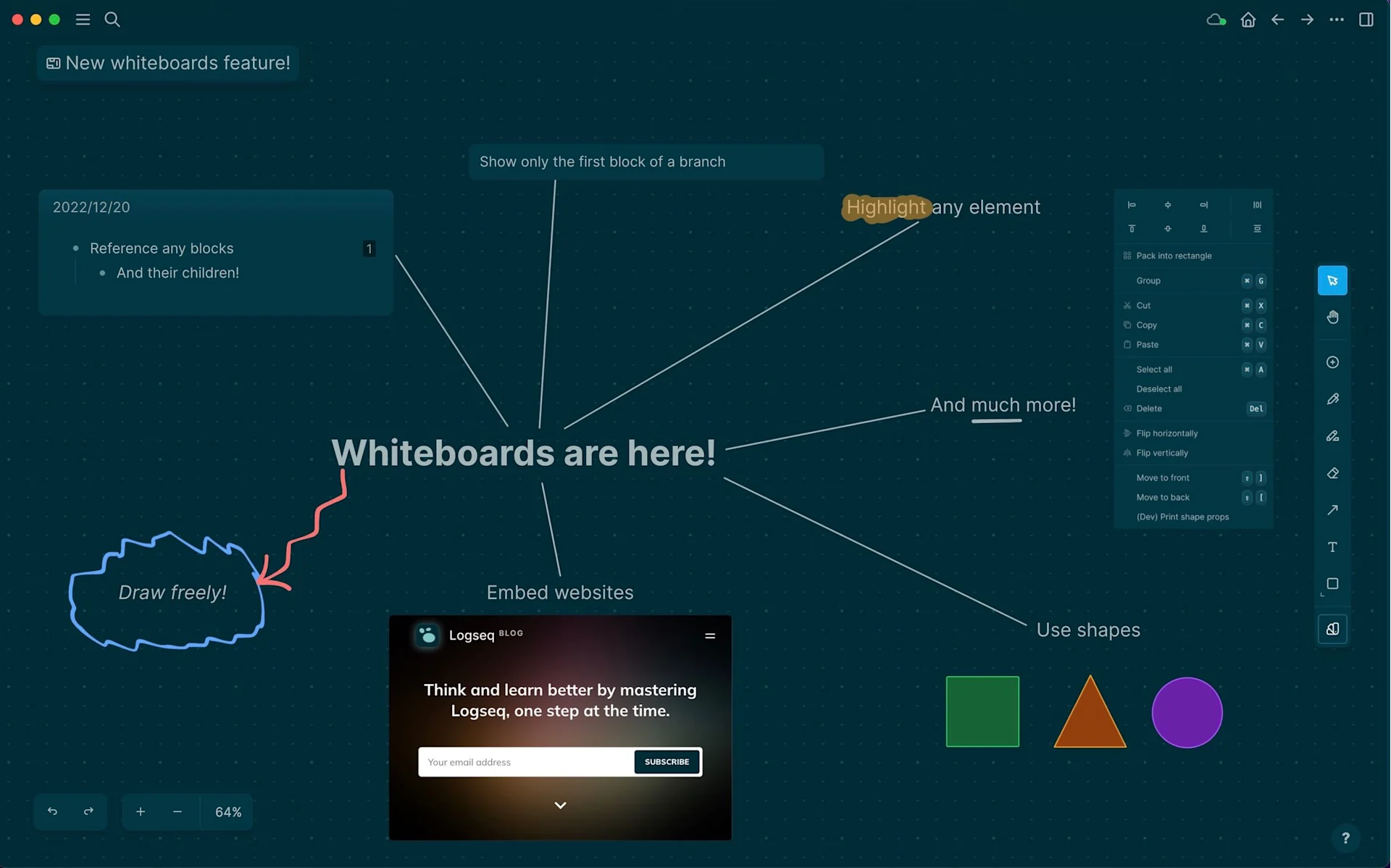
What makes Logseq a great visual notes app?
Logseq has whiteboards, a new feature to their line-up.
Whiteboards help you express and bring to life your Logseq notes. Logseq whiteboards add to Logseq's traditional PKM experience with notes, flashcards, calendar, and graph view - this expands the range of optionality.
Whiteboards want to be your visual canvas for managing and bringing notes into one location. You can sketch, add PDFs, YouTube videos, and more, which makes Logseq's whiteboard great for managing anything visually, with few limitations regarding media.
Scrintal
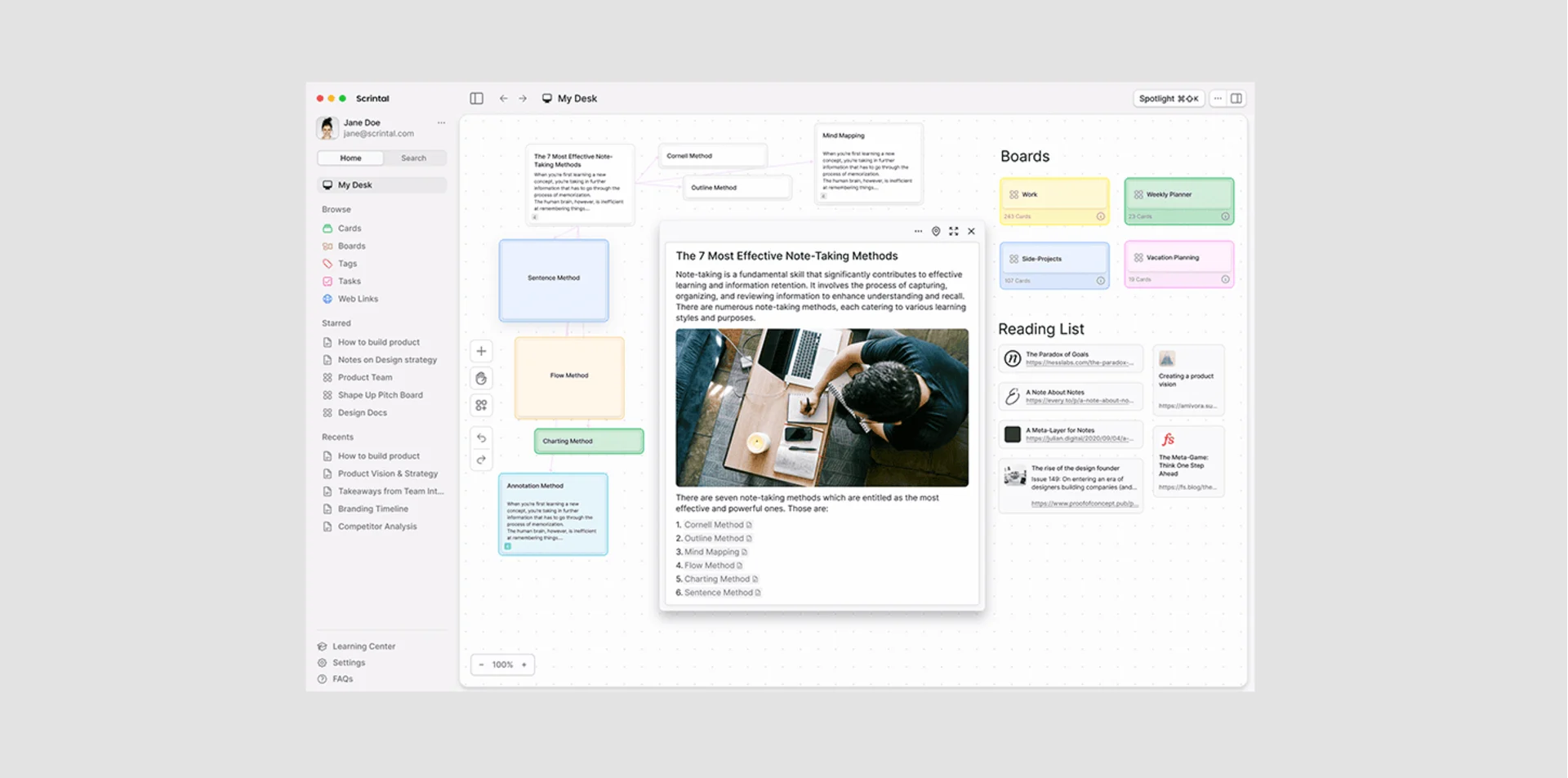
What makes Scrintal a great visual notes app?
Scrintal is a visual notes app focused on collaboration and is popular with researchers. A combination of notes and visual note-taking with media, Scrintal is the perfect cross between PKM apps like Obsidian and tools like Miro that are used for visual collaboration.
Visual note-taking allows you to create notes, link them together, and use the on-canvas experience to connect ideas with linking arrows. Many people credit Scrintal as it isn't just about the canvas for making visual notes. It also has views for bringing ideas into a more traditional layout—for finding documents and more.
Right now, Scrintal is only available as part of a subscription, but it comes highly recommended by many people who use it to bring ideas together in one location. With decent search, command bar abilities for notes, and the view not just restricted to canvas view, people are observing whether Scrintal is their way of bringing ideas together.
mymind
Best for Images
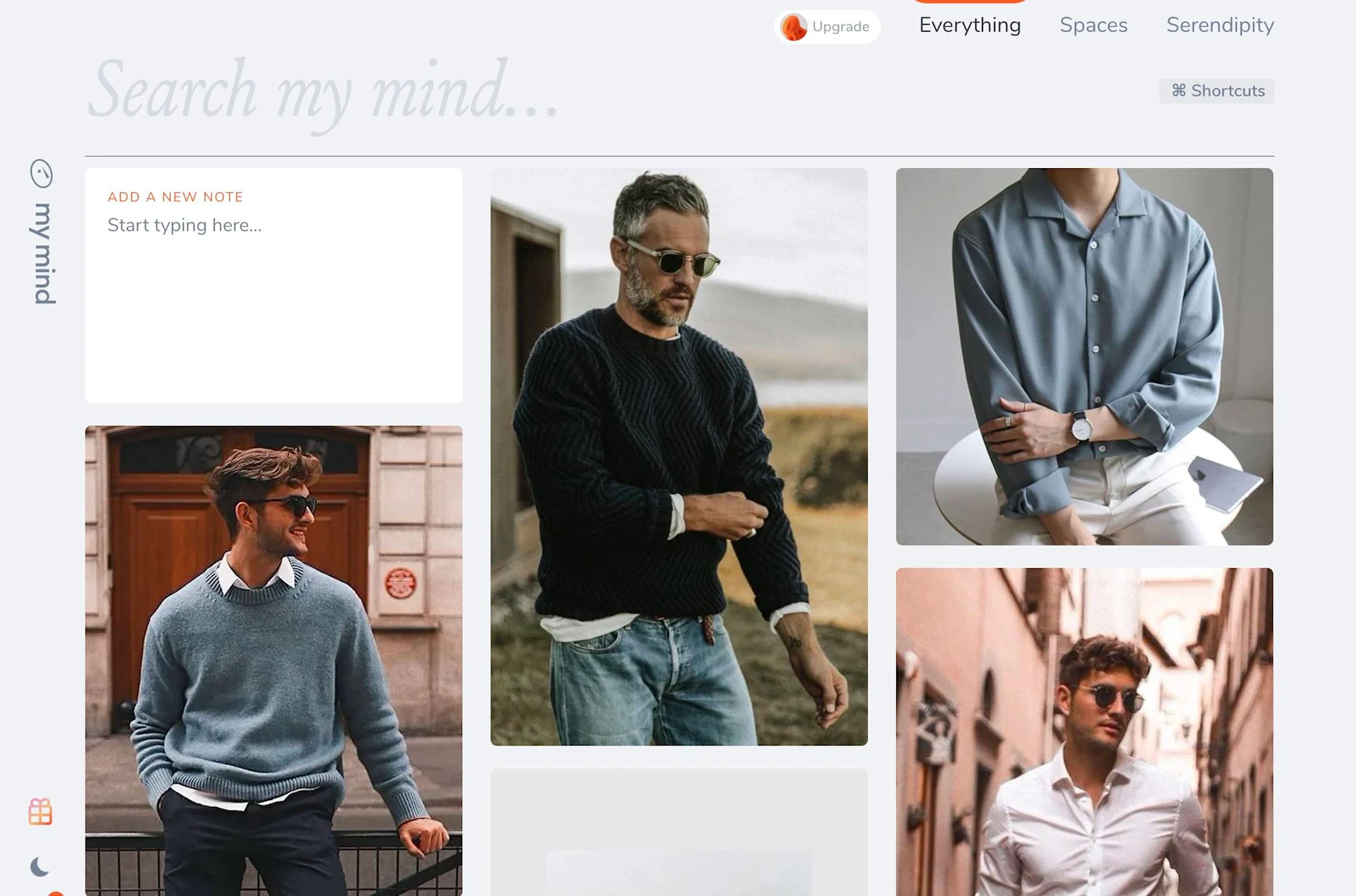
What makes mymind a great visual notes app?
mymind is a note-taking app like Pinterest.
Not really on our original list; mymind has visual capture for notes and a way to see them all inside of their mymind apps, but it does not have the same canvas feel. It is still considered a visual notes app because it has the hallmarks but not the concept of visual thinking and connection. mymind is 100% still worth the consideration.
If you want a unique, opinionated way to take notes by capturing them, finding them using AI & a stunning experience, mymind has all that. mymind is the much more structured version of the apps above.
Milanote
Best for Creative Projects

Why is Milanote a good visual notes app?
Milanote provides tasks, boards, and a way to take notes in one place.
Many people like Milanote because it provides a better way to collaborate with others, manage projects, and, most importantly, take very visual notes. Many people find that they use it to manage notes and life. Creating boards, making lists in columns, and bringing in visuals and files makes it more than just a place for note-taking.
While it is used by many small design teams and even visual thinkers like freelancers to collaborate better and bring ideas and projects to life, many also use it for personal note management.
Google Keep
Digital Post-it Notes
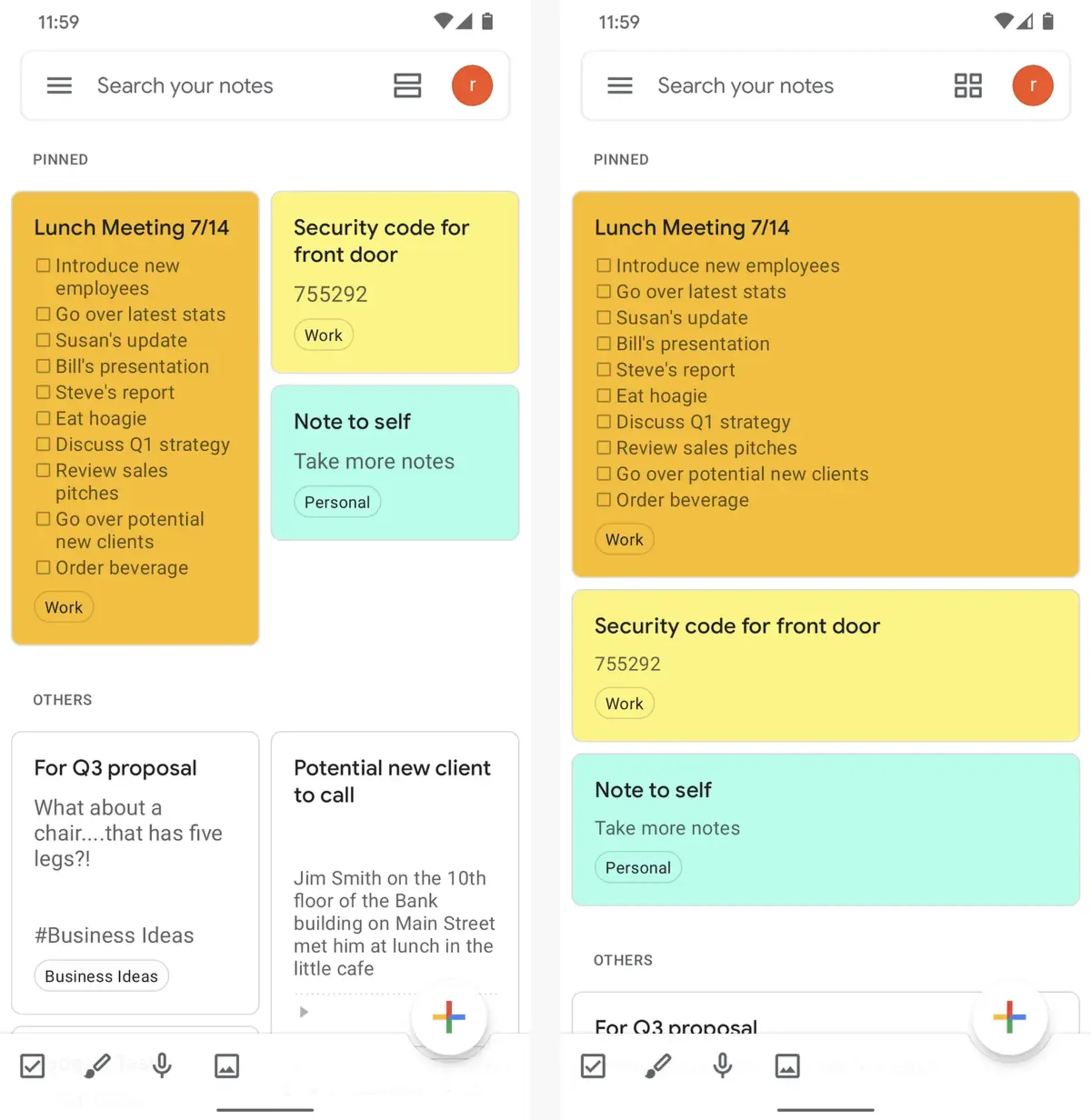
Why is Google Keep a good visual notes app?
Google Keep is like the digital version of Post-it notes on your phone.
This makes Google Keep, while not as fully fledged as tools like Heptabase, a great way to capture images, quick reminders, color-coded Post-it notes, and much more. What is more visual than Post-it Notes and Google Keep? It tucks away best on your phone as a much lighter note-taking application with a visual nature.
Create notes, add colors, tag them, search for them using image-AI search, and capture images and files. Connect with Google Docs and lots more, making Google Keep a fantastic lightweight visual note-taking application.
Miro
Best for Teams
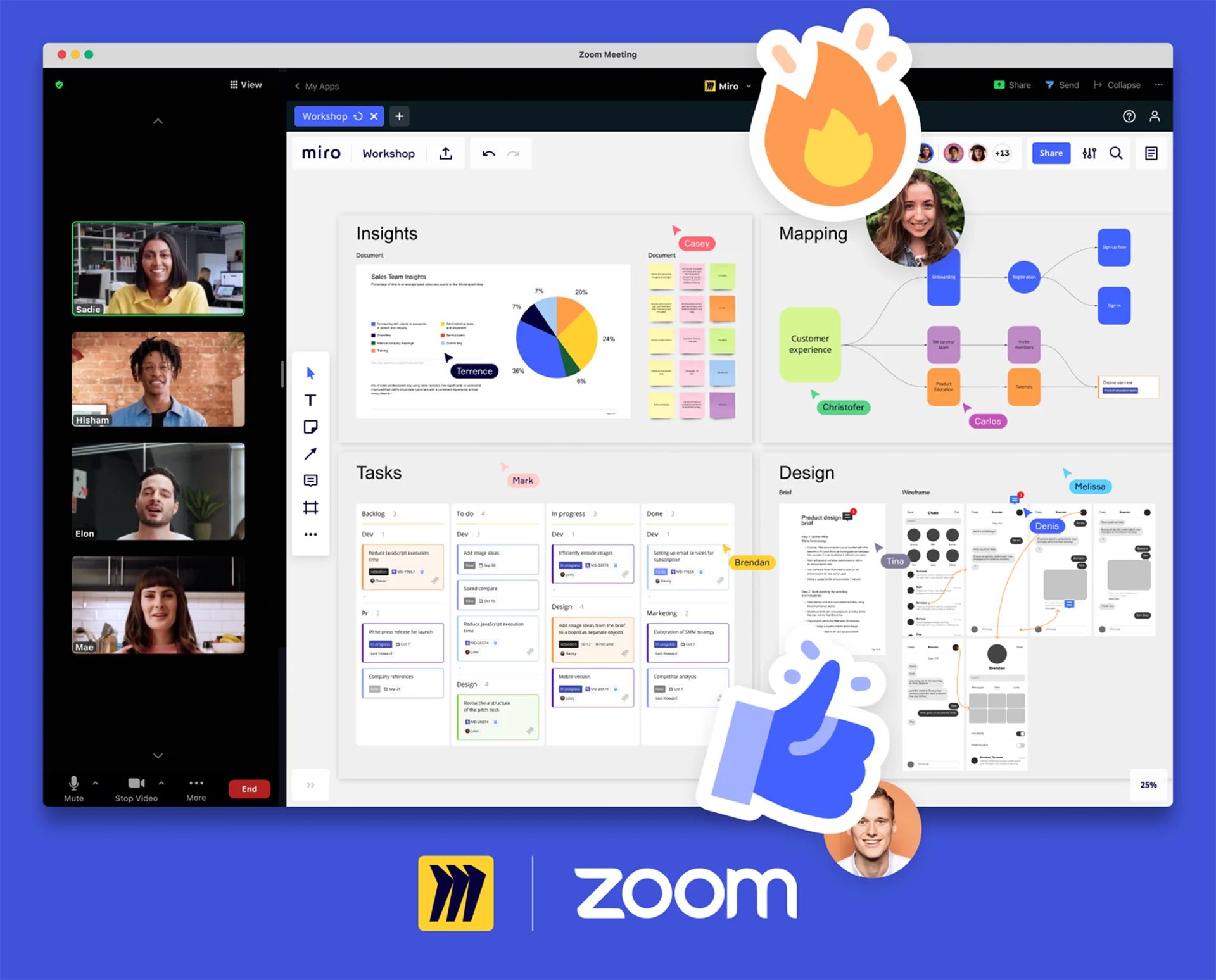
Why is Miro a good visual notes app?
Miro is a tremendous visual notes app for teams to collect ideas and express progress.
While Miro is much more of a team note-taking application, it can still be used by solo users, much like Milanote can be. It unlocks a much more collaborative base to create shapes, build ideas and visuals, upload files, and even build entire templates like roadmaps, flowcharts, and much more. Miro is a tremendous canvas-like layout for solo users that helps them get their thinking down and allows for collaboration if needed.
Miro is going to be a super tool for teams to collaborate better.
More Recommendations
Which Visual Notes App Should I Get?
In the rapidly evolving world of visual note-taking, selecting the right app to suit your specific needs can be challenging. We've distilled the options into four key categories to assist you in this endeavor, each with its standout candidate.
Best for Personal Knowledge Management (PKM)
- Obsidian excels in the realm of PKM due to its robust features that cater to deep, interconnected thinking. The app’s Canvas feature is particularly noteworthy, allowing users to visually map out and connect ideas on a digital whiteboard.
- This functionality is ideal for those who crave a structured yet flexible environment to manage their knowledge. With local storage, offline support, and heightened security for note privacy, Obsidian is not just a PKM tool but a sanctuary for your thoughts and ideas.
Best for Research & Visual Learners
- Heptabase stands out for its unique approach to handling complex research tasks. It's designed to facilitate deep, networked thinking, making it an ideal tool for researchers and academics. The app’s ability to create interconnected notes and organize them on virtual whiteboards aids in synthesizing and visualizing complex information.
- This makes Heptabase a powerful ally for anyone engaged in intensive research work, where connecting disparate ideas and concepts is key.
Best for Team Visual Note-Taking
- Miro is a frontrunner in collaborative visual note-taking, particularly for team settings. Its interactive whiteboards foster a shared space for brainstorming, project planning, and idea visualization.
- Miro's strength lies in its capacity to bring team members together in a dynamic, real-time collaborative environment, making it an excellent choice for teams seeking a shared space to cultivate and organize collective ideas and strategies.
Best for Creatives & Designers
- Milanote is a haven for creatives seeking a visually driven, flexible platform to manage projects and ideas. Its free-roaming canvas supports a wide range of content types, from simple notes to complex visual boards.
- This makes it a perfect tool for designers, artists, and other creative professionals who require a visually intuitive and aesthetically pleasing environment to organize their creative processes and project elements.
In choosing the right visual note-taking app, consider how these tools align with your specific needs, whether it be managing personal knowledge, conducting in-depth research, collaborating with a team, or nurturing creative projects.
Each of these apps brings a unique set of features and strengths to the table, tailored to different user requirements.
Benefits of Visual Note-Taking Apps
Here are some of the benefits to using visual notes apps to think about:
- Perfect for Visual Thinkers: This system-based notes app is a great lifestyle suitor for those who have always been creative and work with seeing rather than reading or recalling. Visual thinkers and designed-based individuals will love these, and it'll help them feel at home with their notes apps, increasing ideas to success.
- Signs of Progress: Whenever you look back at old notes, you tend to see yourself progressing. Maybe it is the work you're doing or the approach to work. With the Visual Notes app, you can see how your thought process has upgraded each time.
Common Features in Visual Note-Taking Apps
Here are some of the most typical features to find in a visual notes app:
- Canvas: A whiteboard-like space to bring all your notes into one space. Perfect for visual thinkers, this surface helps to drag notes around and place them in the position you want as you add images, notes, and files in one location.
- Linking Notes: Connecting notes has become a popular activity of PKM apps (in which many of the visual notes apps are) and linking notes extends to the canvas in visual notes apps allowing you to bring ideas together & link them in your space visually.
- Existing Notes: Pool from your existing notes typically means you can bring ideas you've had, notes you've made on research, or any note you've taken and pool them into the canvas making it much more of an opportunity to source past notes.
A survey by Scrintal, one of the visual note-taking apps, revealed that 68% of people preferred a better design over a comprehensive feature set. This focus on design has driven the rise of visual note-taking applications in the market.
What makes visual note apps different from regular note apps?
How do they differ from traditional note-taking software? Many common note-taking apps like Evernote are driven by more list-based notes that cannot be expressed on a whiteboard. The main key difference is this layout, visual note apps allow you to move notes around a canvas whereas traditional note apps don't.
Another key difference could be, depending on the software, the ability to connect notes, take daily notes, and bring visuals into the canvas - these abilities are more frequent in tools that are more advanced visual note-taking apps; we'll list these below.
Oops, undefined is still in development...
Weekly Roundup: Explore People's Productivity Tools
Become a reader to our newsletter exploring what productivity apps people use on a daily basis to get things done